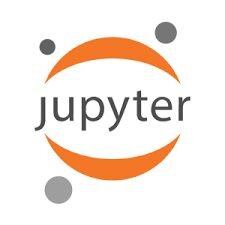May 20th, 2025
Julius AI vs. Jupyter: What’s Better for Data Analysis and You?
By Connor Martin · 5 min read


What are you looking for in a data analytics tool? Both Julius AI and Jupyter are innovative, creative solutions for a range of data analysis use cases, yet they offer very different user experiences.
Let’s dive straight into our Julius AI vs. Jupyter comparison to help you understand which tool is right for your needs.
Key Takeaways
• Jupyter offers full coding control and flexibility for advanced users, while Julius AI provides fast, no-code data analysis accessible to all skill levels.
• Julius AI automatically generates insights and visualizations through a natural language interface, eliminating the need for manual setup or programming.
• Choosing the right tool depends on your expertise — Jupyter suits experienced programmers, while Julius AI empowers anyone to explore and visualize data quickly.
Overview of Each Tool
Here’s a brief overview of these two powerful data analysis environments.

Jupyter
The Jupyter Project encompasses several tools all based on the concept of computational notebooks. Jupyter Notebooks combine code (programming languages) and natural language to create files that perform various tasks. It’s an open-source, code-first, integrated development environment (IDE) that allows data scientists and other technically minded users to write and run code for data analysis, visualizations, and equations.
Because it’s coded by the user, Jupyter offers full control, transparency, and entirely customizable workflows. Popular use cases include machine learning and statistical modeling. However, without any programming knowledge, it’s impossible to get started with Jupyter – it’s not for beginners or most hobbyists. There’s a steep learning curve, and some aspects of visualization creation require the use of additional tools or manual setup.

Julius AI
Julius AI leverages AI and machine learning techniques such as natural language processing and generation (NLP/NLG), enabling users to visualize data in multiple ways. One reviewer described Julius AI as, “…a powerful data analyst, a generative AI answer engine, and a research assistant that enables you to do magical stuff with your data.”
Users can automatically generate sleek, useful visuals from a range of data formats and sources. Julius AI is therefore ideal for complex data analytics, making it accessible to even non-technical users. The natural language interface provides near-instantaneous AI-generated insights for data-driven decision making.
Feature Comparison
Take a look at how each of these platforms performs in terms of the following features.
Coding and Customization
If complete control is essential for your data visualization projects, then Jupyter is the ideal solution. You can insert any Python-based code (and other languages via additional kernels) and edit it using Jupyter Notebook or JupyterLab.
Conversely, on the other end of the scale, Julius AI offers a completely no-code environment. While this means that you can’t see what code is running your data analytics queries, it makes the platform highly accessible to everyone, regardless of programming aptitude.
Data Visualization
Jupyter Notebook allows for the creation of limitless visuals for those who have the skill to code them. Some charts and graphs may require the use of additional modules and libraries, such as Matplotlib or Seaborn. Julius AI empowers users to create visuals directly from their source data without any coding knowledge, utilizing the built-in, analysis-specific AI.
Automation and AI
While automated tasks can be coded into Jupyter documents, the initial work must all be done manually. Julius AI makes everything automatic, apart from uploading your initial data files. You can attach AI modules to Jupyter Notebook, such as a ChatGPT add-on that provides generative AI capabilities. In Julius AI, users gain access to an advanced AI-powered natural language interface without the need for any add-ons or manual coding.
Data Exploration Speed
The speed of Jupyter depends on the code; skilled programmers can use shortcuts and extensions to optimize the performance of their notebooks. There are instances of Jupyter struggling with large datasets, but again, this is usually down to the efficiency of the programming. Julius AI is designed to handle large datasets and provide insights fast.
Ease of Use
Jupyter is only easy to use for skilled programmers who are comfortable writing and debugging code. New users must invest significant time learning Python or other compatible languages before they can take full advantage of its capabilities.
Julius AI’s no-code environment makes it accessible to anyone who needs to manipulate and visualize data, from statisticians to students to business data managers. Its guided interface and natural language processing reduce the technical barrier, allowing users to focus on insights rather than setup.
Reproducibility and Documentation
There’s a wealth of documentation available for both environments, offering guides, tutorials, and examples to help users get started. Jupyter’s strong open-source community provides extensive resources for troubleshooting and learning advanced techniques.
Julius AI also provides comprehensive support materials and help guides, ensuring users can quickly understand how to upload data, generate insights, and collaborate effectively. Both tools support reproducible workflows, allowing results to be shared and validated by others.
Integration with Other Tools
Jupyter users can integrate with other tools via their own code segments or by utilizing pre-built extensions, offering high flexibility for technical users. For instance, users often connect Jupyter to databases, visualization libraries, or cloud platforms through scripting.
Julius AI allows the use of APIs to connect to multiple tools and data sources, providing a streamlined way to pull in external data and automate workflows without needing to write integration code manually.
Pros and Cons: Jupyter vs. Julius
Here’s a quick look at the pros and cons of Julius AI vs. Jupyter to help you make your final decision.
Jupyter
Pros:
• Full transparency and control over code and output
• Ideal for deep statistical analysis and modeling
• Supports Python libraries like Pandas, Matplotlib, Scikit-learn, etc.
• Reproducible, shareable notebooks
Cons:
• Requires programming skills
• Initial setup and creation of data management tasks are time-consuming
• Most visuals and outputs require manual creation
Julius AI
Pros:
• No coding required
• Automatic, AI-driven insights and charts
• Very fast setup and results
• Accessible to beginners and business users as well as data scientists
Cons:
• Internet/cloud access required
• Limited manual customization options
• Not yet an industry standard
How to Choose the Right Tool for You
Choosing the perfect data analysis tool means figuring out both your analytics requirements and your aptitude with data science or coding. If you’re an outright beginner, then Jupyter will be tricky to learn, especially if you have no programming experience. However, if you need multi-purpose computational notebooks and have the coding skills to produce them, Jupyter represents a useful environment in which to create these.
Julius AI, on the other hand, requires no coding skills and only needs you to have gathered your raw data together. The platform accepts multiple data formats and can connect to various tools via APIs, allowing you to quickly plug in your data and gain actionable insights within moments.
Want a No-Code Way to Analyze Your Data? Try Julius AI for Free
It’s easy to get started with Julius AI and enjoy no-code data analysis and visualization. Sign up today for free and discover intuitive ways to gain actionable insights from your data.
Frequently Asked Questions (FAQs)
Is there anything better than Jupyter?
It depends on your needs. Jupyter is excellent for users with strong coding skills who want full control over their analysis. However, for those seeking faster insights, easier visualizations, and no-code accessibility, platforms like Julius AI offer a powerful alternative that automates the process without the complexity of manual programming.
Can I use AI in Jupyter Notebook?
Yes, you can integrate AI capabilities into Jupyter by writing your own code or using extensions like ChatGPT APIs or machine learning libraries such as TensorFlow and Scikit-learn. However, this requires technical setup, whereas Julius AI offers built-in AI-driven insights and visualizations out of the box without any coding needed.
Do data scientists use Jupyter?
Yes, Jupyter is a staple tool for many data scientists, particularly those working in machine learning, statistical modeling, and academic research. Its flexibility and control make it ideal for advanced users. However, for faster, automated analysis without programming, platforms like Julius AI are becoming increasingly popular.
Why use Julius AI instead of Jupyter?
Julius AI is ideal if you want fast, AI-powered data analysis without needing to write code. It’s designed for users who prioritize speed, ease of use, and accessibility, offering automated insights and sleek visualizations within minutes. Jupyter, by contrast, demands technical expertise and manual setup to achieve similar results.
